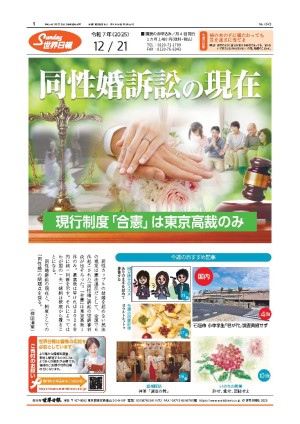中国で元軍人らが抗議デモ China military unrest
ドナルド・トランプ次期大統領の米中関係をめぐる最近の発言に、中国共産党指導者らは懸念を抱いているが、その一方で、職に就けないことに不満を持つ、何万人もの元軍人らが騒動を起こし、不安が高まっていることに懸念を強めている。米国防当局者が明らかにした。
中国政府は、トランプ氏が11日に台湾の主権は中国にあるという中国の政策に対して疑念を呈したことを批判した。
人民解放軍(PLA)の元兵士らの怒りが表面化したのは、最近行われた2度の抗議デモ。元兵士ら数万人が10月と11月、北京の中央軍事委員会本部近くに集まった。
米情報当局者は「これら元軍人らによって、北京に安全保障上の強い懸念が生じている。元軍人らを暴走させたのは中国政府だ」と指摘した。
1回目の抗議デモは10月11日、2万から3万人の元兵士らが参加して中央軍事委本部で行われた。中央軍事委は、中国の権力中枢であり、習近平国家主席が委員長を務める。
抗議デモには、高齢の元軍人、退役したばかりの兵士も参加した。全国の十数都市から集まって、約束されていた年金、医療補助、社会保障の給付を中央軍事委に求めた。
2度目のデモは11月1日に起きたが、参加者の数について詳しくは明らかになっていない。中国当局が国内外での報道を規制するための措置を講じたためで、ほとんど報道されなかった。
元軍人らの怒りは、非常に大きな政治的危険性をはらんだ政治運動だと米情報機関は見ている。この元軍人らには政府の冷遇を受け、軍の縮小計画の一環として退役させられた兵士も多い。
元軍人らの抗議デモは、支配政党共産党と党が支配するPLAへの新たな抗議運動が起きていることを示している。
ラジオ・フリー・アジアが北京から報じたところによると、抗議デモに対し、治安部隊と警官らが動員され、警官らは、報道陣の取材を阻止しようとしていた。11月のデモの前、中央軍事委本部付近には、デモ参加者らが近づけないようバリケードが設置されたという。
ガオとだけ名乗った元軍人は「1976年に北京で陸軍に入隊し、1988年に復員を命じられた。最初はそれほど悪くなかったが、そのうちに工場で一時解雇が始まり、(58㌦を)与えられたたけで、退職を言い渡された。決して十分ではない。不当な扱いを受けた。軍のためにできる限りのことをしてきたが、後には何も残らなかった」と話した。
デモには、退役した兵士、将校ら、核実験や1979年のベトナムとの国境紛争に参加した兵士らも参加していた。治安部隊は、デモ参加者らの帰郷後、取り締まりを開始した。拘置施設がホテルに設けられ、元軍人らは尋問を受け、殴打され、虐待された。
抗議行動は、利用者の多いソーシャルメディアでも続けられ、検閲が強化された。
共産党指導部は、元軍人による抗議デモを安定への重大な脅威とみている。
政治アナリストの梁京氏はラジオ・フリー・アジアで「安定維持への強い圧力をかけても、習近平国家主席が反汚職キャンペーンを行っても、経済的恩恵の分配システムの中の巨大な不公平に対処できなかった。今後、怒り、不満を持つ人々は増え、その不満はすべて、最終的には政府に向けられることになる」と指摘した。
(12月14日付)
President-elect Donald Trump’s recent comments about U.S.-China relations are not the only worry facing China’s Communist rulers. Leaders in Beijing are increasingly worried about growing military unrest from tens of thousands of disgruntled former soldiers who can’t find work, according to Pentagon officials.
Beijing criticized Mr. Trump for remarks Sunday questioning China’s policy of having sovereignty over Taiwan.
The anger in the ranks of ousted People’s Liberation Army soldiers surfaced in a two recent protest demonstrations by tens of thousands of former military personnel who gathered near the Central Military Commission (CMC) headquarters in Beijing in October and November.
“There are real security concerns in Beijing about these demobilized soldiers,” said a U.S. intelligence official. “They are kind of being pushed over the edge by the government.”
The first protest involved between 20,000 and 30,000 former soldiers on Oct. 11 at the CMC headquarters - the ultimate power center in China whose chairman is President Xi Jinping.
The military protesters included older veterans and recently demobilized troops. They came from a dozen cities around the country and were demanding the CMC provide promised pension, medical and social security benefits.
A second protest took place Nov. 1 but details of the number of protesters could not be learned. The November protest received far less news coverage as Chinese authorities took steps to prevent reporting, both in China and abroad.
The veterans’ anger highlights what U.S. intelligence has estimated is one of China’s most politically dangerous protest movements. The former soldiers have been mistreated by the government and more are being demobilized as part of plans to streamline the Chinese military.
The disgruntled soldiers represent a new kind of opposition to the ruling Communist Party and the party-controlled People’s Liberation Army.
Chinese internal security troops and police were called out during the protests, and police tried to prevent news reporters from covering the protests. Prior to the November demonstration, barricades were erected near the CMC to keep protesters away from the military headquarters, Radio Free Asia reported from Beijing.
“I signed up to the army in 1976 in Beijing, and was demobilized in 1988,” said one veteran who identified himself only as Gao. “It wasn’t too bad to start with, but then they started laying people off in the factories, and we were just given [$58] and told to leave. That was never going to be enough. We have been unfairly treated. I gave my best years to the army, and I have nothing to show for it.”
The protesters included both former enlisted soldiers, and officers as well as soldiers who took part in Chinese nuclear tests, and China’s 1979 border war with Vietnam. Chinese internal security forces also have started cracking down on the protesters after they returned to their home districts. Detention facilities have been set up in hotels where former military members are interrogated, beaten and harassed.
The protests also have continued on China’s vibrant social media platforms, prompting tighter censorship.
The ruling Communist Party leadership regards the military protests as a major threat to stability.
“Neither the high-pressure stability maintenance strategy, nor President Xi Jinping’s anti-corruption campaign have been able to address the huge inequalities within the system for the distribution of economic benefits,” political analyst Liang Jing Liang stated in a recent commentary for Radio Free Asia. “This will leave more and more people angry and dissatisfied, and eventually all of that dissatisfaction is going to be directed at the government.”
December 14, 2016





